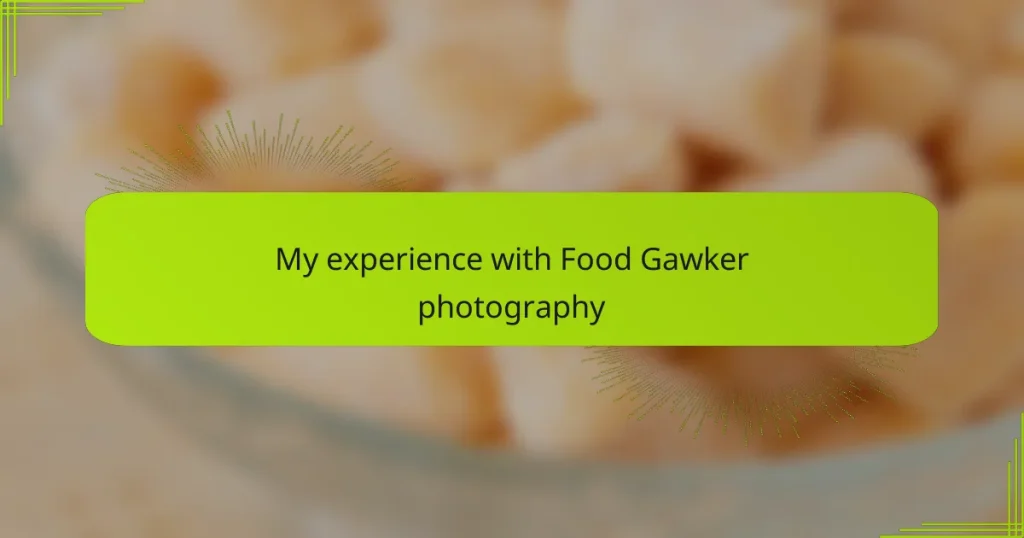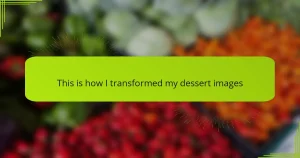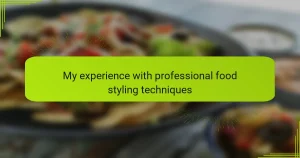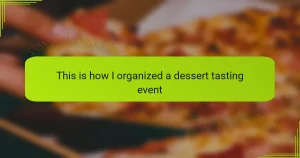Key takeaways
- Food Gawker photography emphasizes the importance of lighting, composition, and freshness to create enticing dessert images.
- Simplicity in styling, with minimal props and a focus on texture, enhances the visual appeal of desserts.
- Utilizing the right tools, such as a quality lens and reflector, can significantly improve the quality of dessert photographs.
- Patience and experimentation with angles and lighting can lead to captivating images that evoke a sense of taste and connection.
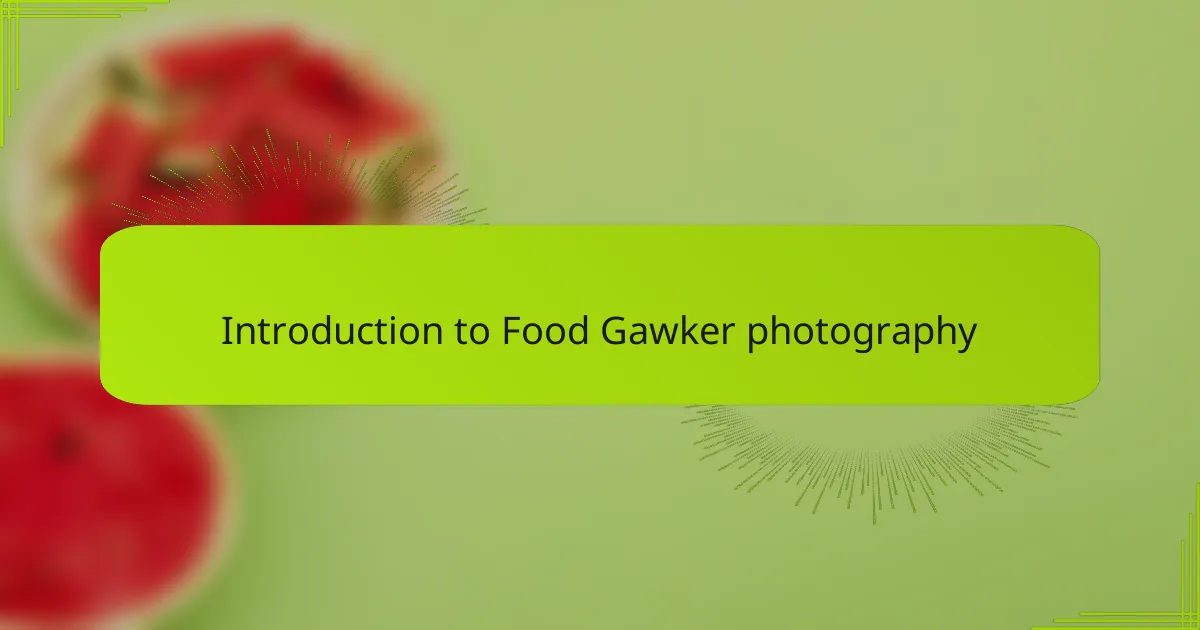
Introduction to Food Gawker photography
Food Gawker photography is all about capturing desserts in a way that makes them irresistible. When I first discovered this style, I was struck by how each photo seemed to tell a story—inviting me to taste the textures and flavors just by looking at the image. Have you ever wondered what makes a dessert photo truly mouthwatering?
For me, it’s the balance between lighting, composition, and that perfect moment of freshness. I remember spending hours experimenting with angles and natural light, trying to recreate that Food Gawker magic. It’s not just about snapping pictures; it’s about capturing the essence of dessert itself.
What I appreciate most about Food Gawker photography is its ability to connect food lovers and creators through stunning visuals. Seeing a beautifully styled photo can inspire you, just as it did for me, to pick up your camera and start sharing your own delicious creations.
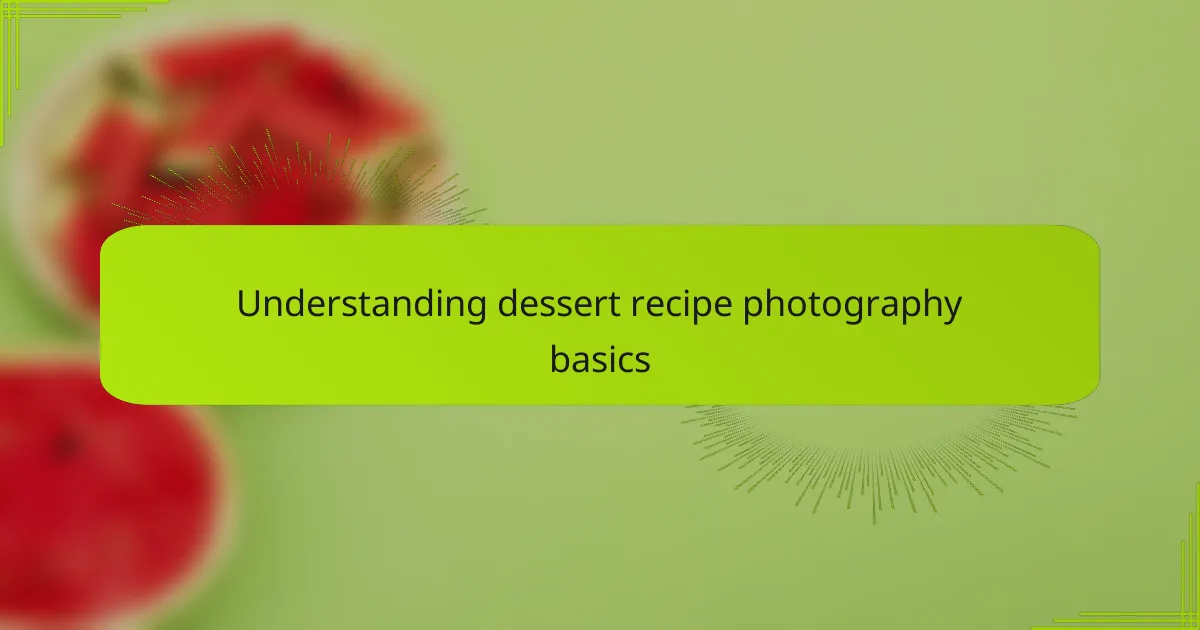
Understanding dessert recipe photography basics
When I first started exploring dessert recipe photography, I quickly realized that lighting is everything. Natural light, especially soft morning light, brought out the rich colors and delicate textures of my cakes and tarts in a way artificial lighting never could. I often found myself chasing the perfect window spot, wondering how such a simple change could transform an entire photo.
Another key to nailing dessert photography is composition. I learned to think like a storyteller—each element on the plate, every fork or napkin, had to have a purpose. Sometimes I’d rearrange the scene dozens of times before realizing that less really is more. Have you ever noticed how a few crumbs or a drizzle of sauce can turn a good picture into an irresistible one?
Finally, capturing freshness became a personal challenge that I grew to love. I remember photographing a batch of chocolate chip cookies just as they came out of the oven, with melting chocolate glossing over each bite. That moment of hot-from-the-oven warmth isn’t easy to catch, but when you do, it adds an emotional pull that makes viewers almost taste the dessert. Doesn’t that feeling make photography feel more like sharing a personal experience than just taking a picture?
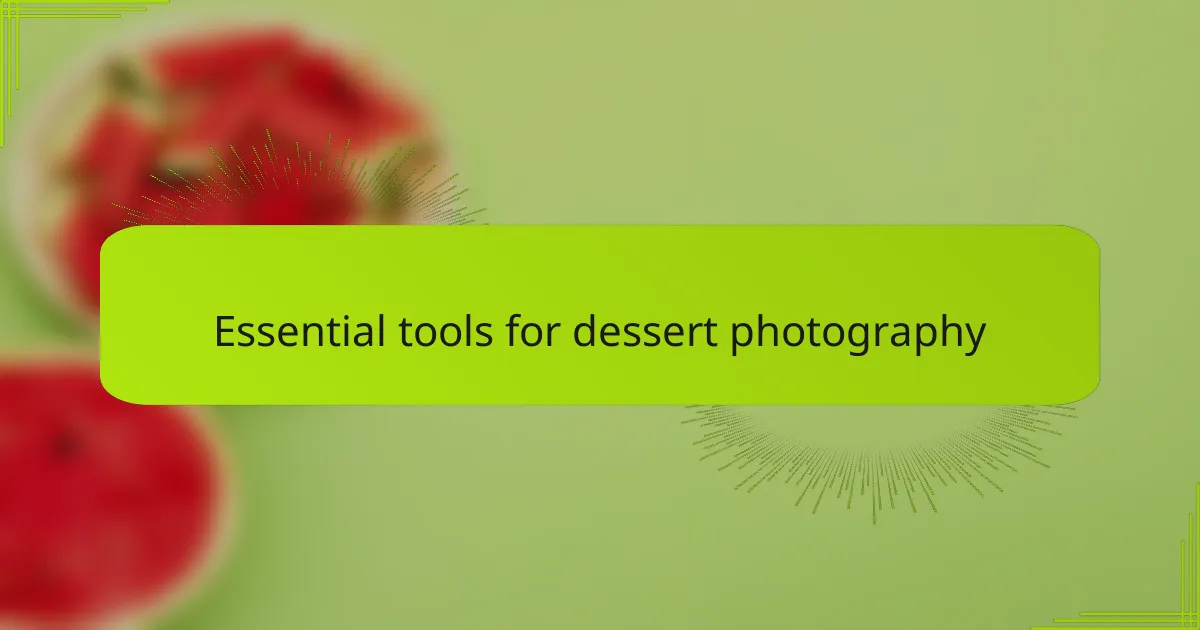
Essential tools for dessert photography
When I first dove into Food Gawker photography, my camera felt like an extension of my hand. A good DSLR or even a quality smartphone camera can do wonders, but I quickly learned that having a lens that lets in plenty of light—like a 50mm prime—makes a huge difference. It’s amazing how much sharper and more inviting those dessert photos become with the right lens.
A tripod quickly became my best friend, especially when natural light was low. I can’t count how many times holding the camera steady saved me from blurry shots of my delicate macarons or glossy ganaches. Plus, using a remote shutter release or timer allowed me to focus on styling while knowing my camera was locked in perfect position.
One tool I underestimated at first was a simple reflector. Bouncing light back onto the shadows of my dessert setups added that subtle glow that makes a photo pop. Have you ever noticed how a little extra light can reveal the glossy sheen on a strawberry or the crumbly texture of shortbread? That small touch brought my photos from flat to downright delicious.
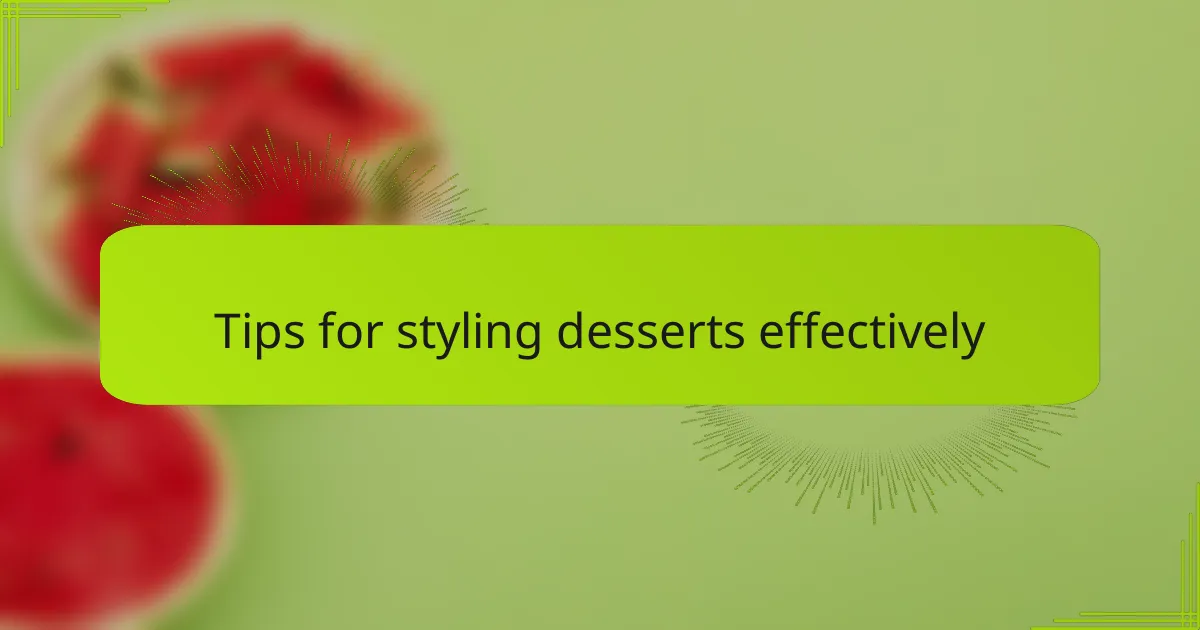
Tips for styling desserts effectively
One thing I discovered early on is that simplicity often wins when styling desserts. Instead of overcrowding the frame, I like to let the dessert shine by adding just one or two props—like a rustic fork or a delicate napkin—to create a mood without stealing attention. Have you ever seen a photo where every item competes for the spotlight? It usually feels overwhelming and loses that inviting warmth.
Textures play a huge role, too. I make it a point to highlight contrast—for example, pairing a smooth glaze with a crumbly base or sprinkling flaky sea salt over chocolate ganache. These little details bring the photo to life and almost let you “feel” the dessert through the image. When I capture those tactile moments, it feels like I’m sharing the dessert’s story beyond just flavor.
Lighting is another styling factor that can’t be ignored. I often angle the light to create gentle shadows that add depth, making the dessert look three-dimensional and more appetizing. Have you noticed how some desserts look almost flat under harsh lighting? Soft shadows help me avoid that, giving the photo a natural, inviting appeal that draws viewers in.
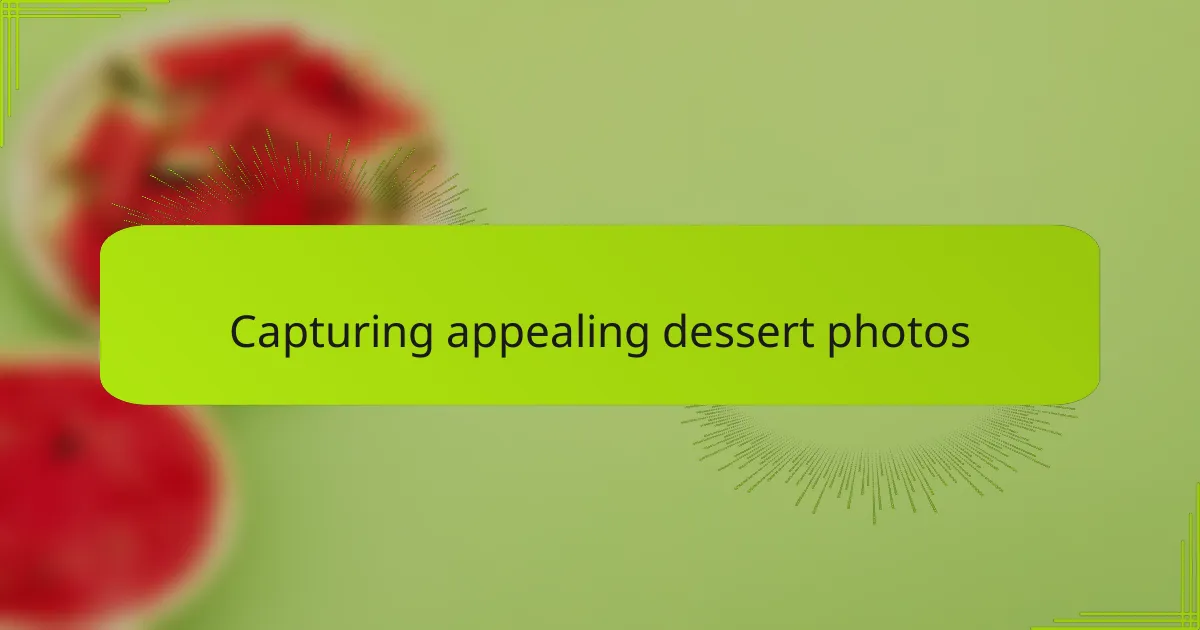
Capturing appealing dessert photos
Capturing appealing dessert photos has been a fascinating journey for me, full of trial and error. I quickly learned that patience pays off—waiting for the right sprinkle to fall or the perfect drip of sauce can transform a decent shot into one that sparks cravings. Have you ever found yourself holding your breath, hoping that fleeting moment doesn’t vanish before you click the shutter?
Lighting, in my experience, is the unsung hero of appealing dessert photos. I remember struggling with harsh shadows until I discovered how soft, diffused light gently enhances textures without washing out colors. That subtle glow almost seems to invite the viewer to reach out and taste the sweetness right through the screen.
Another trick I cherish is playing with angles to showcase the dessert’s best features. Shooting from above captures beautiful layers, while a low side angle highlights the gooey filling peeking out. Experimenting like this made each photo session feel like storytelling, where every shot shares a different delicious chapter. Doesn’t that perspective make photography feel like a conversation between creator and viewer?
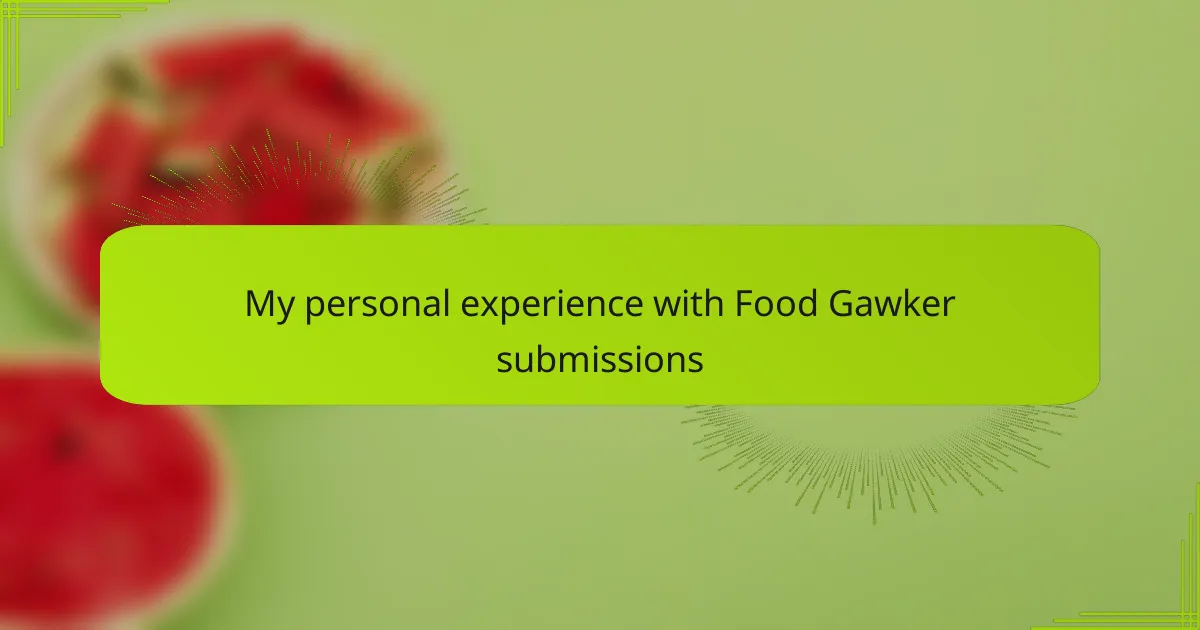
My personal experience with Food Gawker submissions
Submitting my photos to Food Gawker was both exciting and nerve-wracking. I vividly remember my first few attempts—I was eager to share my work but unsure if my images met their high standards. The rejection emails stung at first, but each one pushed me to rethink my approach and improve my lighting and styling.
Over time, I noticed a pattern in what Food Gawker seemed to favor: clean compositions with inviting textures and nuanced natural light. When one of my photos finally got accepted, it felt like a small victory, validating all those hours spent tweaking angles and props. Have you ever experienced that mix of relief and pride after achieving a goal you thought was just out of reach?
What surprised me most was how the process made me more attentive—not just to photography but to the desserts themselves. Knowing that my images might appear alongside so many mouthwatering creations motivated me to capture that fleeting sense of freshness and warmth. It was less about earning a spot on the site and more about sharing the story behind each recipe in its tastiest light.
